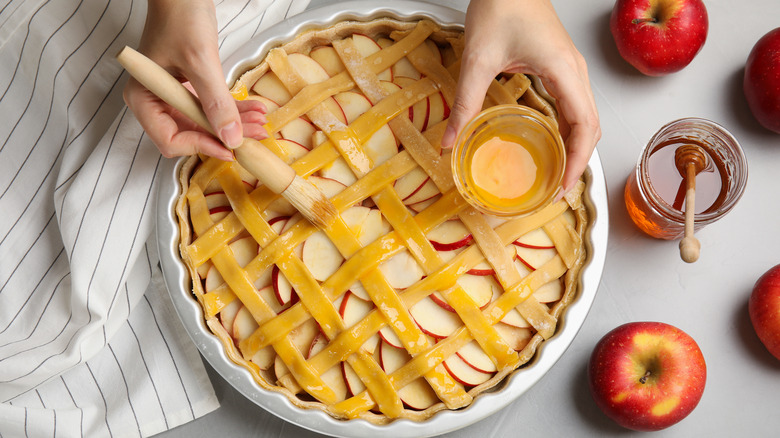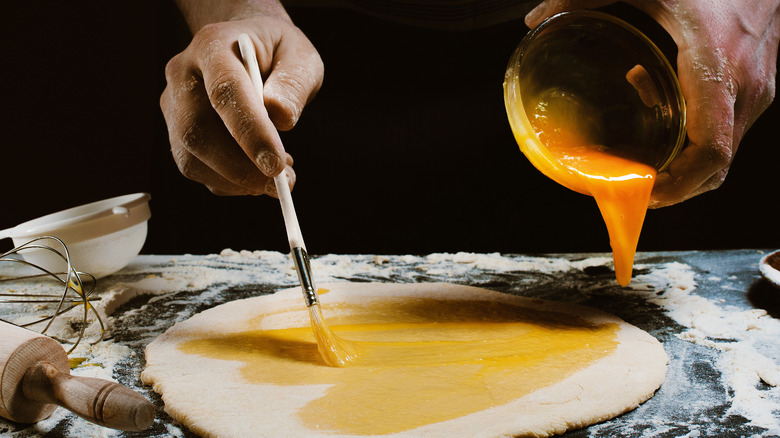The Kind Of Egg Wash You Choose For Your Pie Matters
Egg wash may be one of those things bakers take for granted in recipes, perhaps even whipping it up without thinking. But not all egg washes are created equal, and the subtle differences between mixtures can make more significant impacts on your final product. The most traditional mixture may be that of an entire egg mixed with a small amount of milk. This results in the typical lightly golden brown finish many recipes call for.
However, there are plenty of alternatives for those looking for specific results. Using just an egg with no milk can produce a more intense golden brown, while further eliminating the egg white and only using a yolk creates the brightest, most intense yellow finish. On the flip side, using just egg whites is an excellent trick for producing extra shine without color. There are plenty of other ways to alter this general mixture, too, including adding extra yolks or whites to traditional egg wash, or changing the liquid from milk to water or non-dairy alternatives.
Sweet benefits to proper egg wash
Egg wash is also one of the best ways to help sugar adhere to the top of baked goods, creating that tantalizingly sparkly-sweet look. However, the type of sugar you choose can have a notable impact on the flavor and texture as well, from fine powdered sugar to common granulated varieties to the large crystals and subtle flavors of turbinado and demerara. Beyond sugar, egg wash can also help attach seeds, nuts, or any other small toppings.
In addition to the color, texture, and subtle flavor benefits, there are other reasons why you should start using egg wash in your baking, too. It can also be used to ensure pieces of pastry (like the top and bottom crusts of a pie) stick together in a convenient, edible way. Who knew this simple mixture of just one or two everyday kitchen ingredients could be so diverse and versatile?

